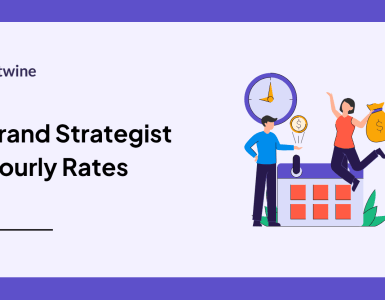For startups operating on a limited time and budget, having an in-house development team is not always an option. While they do require high-performing digital assets like landing pages, hiring developers or outsourcing to design agencies does not seem feasible during early growth stages.
The good news is that they can still create effective landing pages without a technical team. All thanks to smart, no-code tools and freelance talent. With the help of the right landing page builder tool and a smarter content curation process, you, too, can create landing pages that convert.
Why Landing Pages Are Important for Startups
Whether you have just started your business as an entrepreneur or are responsible for the operations at an established brand, high-converting landing pages are one of the keys to long-term success. Ideally, a landing page should act as a digital showcase where you market your products or services in the most compelling way possible. For startups, these pages are even more important as they help these early-stage businesses acquire leads and turn them into customers.
Landing pages are where visitors land after clicking on an ad, email link, or call-to-action button. Unlike homepages, landing pages are designed with a single focus or goal, which is commonly known as a conversion goal. Even though there are several other ways a startup can reach its conversion goals, landing pages have some serious advantages that are hard to ignore.
Focused Attention
Instead of covering various things on a single page, a landing page directs the visitor’s focus towards a specific product or offering.
Higher Conversion Rates
The focused and simplified messaging and layout on these pages reduce distractions, compelling the visitor to take the desired action.
Faster Feedback
Landing pages also give you crucial insights regarding ideas, messages, and offers. The quicker feedback allows startups to test and validate their options.
Data-Driven Decisions
Landing pages also allow businesses to track performance and optimize the pages based on analytics. Startups can use the data to understand the audience’s behavior and make necessary changes.
Do You Really Need an In-House Development Team?
Having an in-house development team certainly has its advantages. You can get personalized pages whenever you want. You do not need to explain your goals and expectations to them every time you need a new landing page. You can have greater control over the development process. And most importantly, the team offers increased security and confidentiality.
However, when you look at it from a startup’s perspective, hiring a team involves high initial costs, potential limitations in expertise, and a recurring expense in the form of salary. Moreover, the team requires ongoing training and development, which can add to the complexity and expense. These are some of the major reasons why startups are turning toward AI-powered tools.
The introduction of no-code landing page builders has simplified the web development process for most startups. Their intuitive, drag-and-drop interfaces and pre-designed templates eliminate the need for custom code. Most of them also come with built-in SEO features, analytics integration, mobile responsiveness, and A/B testing functionality. Businesses can rely on freelance talent for content and design needs, but some tools take care of those areas as well.
Steps to Build Landing Pages without a Dedicated Development Team
No-code landing page generators do make it easier for startups to build personalized landing pages as per their needs. However, creating high-converting landing pages requires a strategic approach and several major considerations. Let’s take a look at the steps to building landing pages without the involvement of a development team.
Identify the Landing Page Objective
Having a clearly defined objective is key to building an effective landing page. From the headline to the call-to-action (CTA) button, every element of the page should support this goal. A single, focused goal helps minimize distractions and ensures a better user experience and higher conversion rates. Some of the common goals for startup landing pages include lead generation, pre-launch signups, product sales, appointment bookings, and content downloads.
Choose a Template that Aligns with the Goal
Most landing page builder tools come with a library of templates personalized to specific use cases. You need to browse through the options and choose the right template that aligns with the landing page objective. Templates offer a structural foundation, allowing startups to customize content and branding without building everything from scratch. For the template to be effective, make sure it has a clear headline and subheadline, high-quality visuals or product imagery, well-placed CTA button(s), and space for social proof, such as testimonials and reviews.
Customize Design and Content
Modern landing page builders come with drag-and-drop functionality that allows users to personalize every element of the landing page visually without any coding. This type of visual editing interface helps iterate and preview changes in real-time, allowing your team to accelerate the landing page building process. The visual editing feature lets you customize brand elements (logos, colors, and fonts), copywriting (headlines and CTAs), images and videos, and layout adjustments.
Use Freelance Talent for Content and Design Enhancements
The template and drag-and-drop editing feature take care of a major part of the job, but you still need specialized support in areas like copywriting, design, or branding. Hiring freelancers is the smartest way for startups to deal with these issues. You can hire copywriters to optimize headlines, body text, and CTAs. Freelance graphic designers can create custom illustrations, icons, or banners to improve the page’s visual impact. UX/UI consultants can help you review page layout and accessibility.
Incorporate Social Proof to Build Trust
Social proof is a great way to earn the trust of your target audience and influence their user behavior. Elements that establish credibility can significantly boost conversion rates. You can use quotes from satisfied customers that highlight benefits or results they received from your products or services. You can also display case studies or reviews on these pages. User stats and media mentions also help early-stage startups reduce skepticism among users.
Ensure Mobile Optimization and Page Speed
Most people these days access the internet on their mobile devices. So, it is crucial that your landing pages are responsive across devices. Use responsive templates that automatically adjust to various screen sizes. Keep text readable with the right font sizes and spacing. Make the CTA buttons large enough for easy tapping. Also, avoid using heavy animations or oversized media files that can slow load times. Load speed directly affects user experience and search engine rankings.
Test Variations with A/B Testing
A/B testing, also known as split testing, allows you to compare two versions of a landing page to determine which performs better. This strategy is highly recommended while testing different headlines and subheadings, alternative images or videos, button text or color changes, and page layouts or lengths. Many landing page builders include built-in A/B testing tools for ease of use.
Launch and Integrate with Marketing Tools
Once you are done with the design and testing of the page, you can publish it with a custom domain or subdomain. To ensure the page works seamlessly within the marketing stack, consider integrating it with tools like email marketing platforms, CRMs, analytics software, or ad networks. From automatically adding leads to email sequences or newsletters to tracking user behavior, these integrations will help you streamline workflows and ensure all campaign data is properly captured.
Conclusion
Creating high-converting landing pages no longer requires a dedicated development team or months of work. Startups, especially those with limited budgets and resources, can take advantage of no-code platforms to build, customize, and launch conversion-focused pages quickly. With the help of such tools, freelance expertise, and the right strategy, it is possible to achieve professional results on a lean budget.




